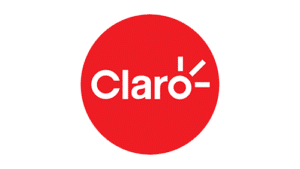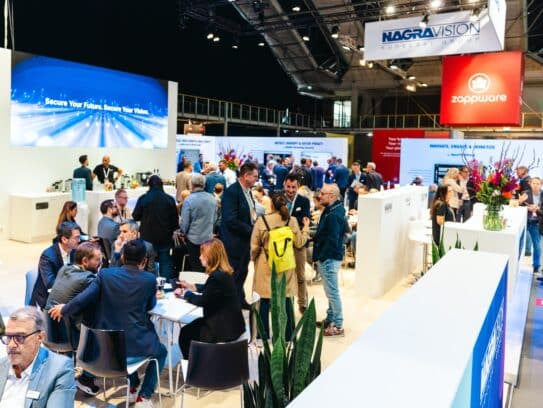In the first blog of a new series about the problems of piracy, Tim Pearson reviews a recent NAGRA interview with a pirate and the insight it provides for the media and entertainment industry.
I recently had a pint at the Llandoger Trow in Bristol. Legend says that the pub provided Robert Louis Stevenson with the inspiration for the Admiral Benbow in Treasure Island. Now it’s also provided some new inspiration around telling the story about how piracy affects today’s media and entertainment industry. Reading the latest reports, various studies tell me piracy is now at epidemic proportions and the UK’s Guardian newspaper reports that, “Streaming was Supposed to Stop Piracy. Now it’s easier than ever”. It’s time to find a narrative that tells the story in a different way – and offers new insight on how we can collectively fight one of the biggest threats facing our industry today.
Getting the Insider’s View
What if we heard it directly from the source? What if we interviewed a pirate and heard it from them and got the inside story from someone who had sat down and purposefully pirated content for financial reward. Pirates don’t tend to advertise their advisory services in the local classifieds, so getting access to one was non-trivial. But the resulting interview gave us valuable insight into why pirates do what they do – and it isn’t all about the money.
This is the first in a series of blogs in which we’ll explore the human factors, motivations, and the methodology of a pirate. We’ll also explore likely implications for the industry and how NAGRA is helping strengthen the fight against piracy across the media and entertainment industry.
Understanding the Human Motivations of a Pirate
The first question we wanted an answer to was Why? Was it for the money, was it about the resulting prestige or was it simply just an intellectual challenge that brought with it significant financial reward?
The pirate was an active television pirate for 17 years. Starting as a bored teenager faced with the growth of the internet, the explosion of technology and list of possibilities this presented for a technically minded person, created a rich playground. A playground that, at the time, had little regulation or consequences.
It took Napster headlines to make the pirate realize there were consequences for the actions he and his collaborators took. He considered that payTV providers were ‘spraying the signal into my yard and they can’t tell me what I can and can’t do it with’. It became a technical challenge to intercept the content and redistribute it for illicit gain. As an ‘advisor’ rather than someone engaged in the actual selling and distribution of pirate content, the pirate sidelined school, work, family and friends and piracy became his sole focus. But with success came a trap. As services were sought, financial gain was made and, despite fellow collaborators being caught, the opportunity for ‘one more’ became a drug that just continued to demand more. Requests for more technology, business, and marketing expertise to help establish new pirate services became a treadmill that he found impossible to step off.
Eras of Piracy
The pirate talks of piracy ‘eras’. The smartcard era and the IPTV era to name two. Eras end with new advancements in technology that pirates, like him, needed to circumvent to continue their illicit activity. These include new anti-pirate tactics from legislators and takedown actions from partnerships between content owners, distributors and vendors such as NAGRA. These not only deterred illegal activities but also saw an increasing number of pirate services taken down.
By comparison to the smartcard era, the IPTV era is a ‘hornet’s nest’. Here is an era that keeps evolving due to advancements in technology on both the pirate and industry sides of the fence. But is it a rolling stone that’s out of control or can the industry collectively form a defense from which to catch it?
The pirate, now reformed and helping the industry fight back, is convinced a defense can be put in place. He believes it starts with education of school children; after all, that’s where he first discovered that his technical expertise could be used for illegal gain. Today’s schooling may cover IP theft and why stealing online is wrong but is this too little too late? The hornet’s nest that is online piracy keeps evolving and as the Guardian article that I featured at the start of this piece suggested, with the advancement of streaming and the associated available technology, piracy should be declining rather than advancing.
The Industry Perspective
The media and entertainment landscape is going through a period of intense change. Changes in distribution approach, changes in content distribution and changes in monetization. All the turbulence this causes provides uncertainty and change which is the perfect hunting ground for pirates. However, with periods of change also come new opportunities for organizations looking to stop piracy. That’s where, as a proud member of several industry alliances around the world, NAGRA has a role to play.
NAGRA anti-piracy teams have tools that continually scan for illicit activity. They’re constantly working with video service operators around the world to identify and act against piracy. However, these activities tend to be reactive. They become more powerful when aligned with pro-active approaches that not only focus on multi-DRM (seen very much as an entry requirement) but also on a range of other technologies that include session management, forensic watermarking, account sharing detection, device management and app protection. When the results of these and other technologies are combined into a centralized security monitoring and analytics dashboard, security moves from a cost center to a revenue center. This provides a 360° view of piracy threats and activities. NAGRA calls this Active Streaming Protection and is actively deploying it with video service operators worldwide as the industry strengthens its fight against piracy.
Get In Touch to Learn More!
This first blog has explored the human motivations of a pirate as told to NAGRA. In the following blogs we’ll explore further the methods and approaches used alongside some insight from the pirate back to the media and entertainment industry. However, if you’d like to learn more about how NAGRA is working with organizations and industry bodies to tackle piracy or would just like to continue the conversation, please get in touch. We have a team of anti-piracy experts ready to discuss your circumstances and provide input on how we can help. You can find details of NAGRA Anti-Piracy Services and Active Streaming Protection on the NAGRA website.























